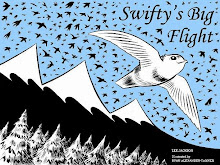Branding for an Accounting Firm: Ancient Symbols Provide a Guide
Assignment: Provide strategic guidance on a new brand for a growing regional accounting firm.
Summary of Approach:
For several years, we have been using The Complete Encyclopedia of Signs and Symbols as a guide for identifying and evaluating the "vocubulary that formulates our thoughts" on brand symbols and establishes a guide for our recommendations on brand development.
Truth be known, we think brand development for most professional service organizations is often over-done, too expensive and contrived. Accenture, for example. Does it really matter what the name of this company is? McKinsey, is another. Would the company be thought of any differently if it were called McClaskey? On the other hand, where would Nike be today if it had been called "Phils Running Shoe Company."
It is, however, fun to conduct a search using the encyclopedia and then cross-referencethat to what can be found through online searches. The encyclopedia begins with a description of symbols:
"The word 'symbol' is derived from the ancient Greek symballein, meaning to throw together. It's figurative use originated in the custom of breaking a clay tablet to mark the conclusion of a contract or agreement; each party to the agreement would be given one of the broken pieces, so that when they reconvened the pieces could be fitted together like a jigsaw." The individual pieces were known as symbola. "A symbol not only represents something else but also hits at a missing 'something', an invisible part that is needed to achieve completion or wholeness."
With regard to accounting, the nearest symbol are dots and lines. We were drawn first to consider lines. According to the encyclopedia authors, "the straight line is one of the five basic elements of Western ideography."
This sign is a base: ___
This sign means unity: I I
This means equality: =
This means complete entities: It also signifies friendship. I I I
This means similarity in one dimension:
___
___
___
And this means the same as:
Other interesting thoughts...
-- Neolithic stones, apparently, with geometric line design, such as those found at Susa in Iran, are thought to be counting stones or calculi - the word calculate is from the Latin "calculus" meaning "stone."
-- It seems many counting sticks and carvings in ancient stones were used to calculate the cycles of the moon.
-- If you type in "ancient accounting" in Google, you will also see some additional images of different counting systems.
What do we recommend?
Counting and keeping track of what we own, owe or desire is an ancient human trait. The symbols representing how we have accounted for people, places or things is virtually limitless. To keep the exercise focused and simple, we sent the following recommendation to our accounting firm client:
To every challenge there is a symmetrical and thoughtful solution. Symbols are ancient things with deep meaning. And while there seems to be no compelling reason to pay a small fortune to re-engineer your brand, there is a way to make the process enjoyable for those of your staff interested in seeing a refresh of your imagery, while also being acutely sensitive to cost.
Everyone can guess at what they might want to see, but it’s the why that must be considered. Why is changing the brand so important? Sometimes the only answer is “because it feels dated.” I am no expert at brand development, but I am a student of it. And a skeptical one at that. I have always chosen more classical interpretations over fancy over-the-top design. I’ve learned that I’m either not smart enough or creative enough to conjure something entirely new. This means I tend to stick to fonts and designs that were developed pre-industrial era or just as the industrial revolution dawned.
Before I get too far ahead of myself, I have some simple advice that I will be prepared to share that is applicable to all professional services concerns. These are the steps to take as you begin.
1. Consider fonts first. Your name is more important than a design. Fonts have history. Understanding the history of fonts is a simple way to give any new brand the symmetry it requires to reduce risk in the human brain.
2. Consider color second. New brain research shows that the human brain is capable of “feeling” colors and assigning images in the brain to colors and feelings. Extreme examples of people “feeling” images is known as synesthetes
3. Consider the meaning of symbols. For example, in the medical world, the caduceus has a long history of connection to the medical profession. What classic symbols come to mind for accountants?













